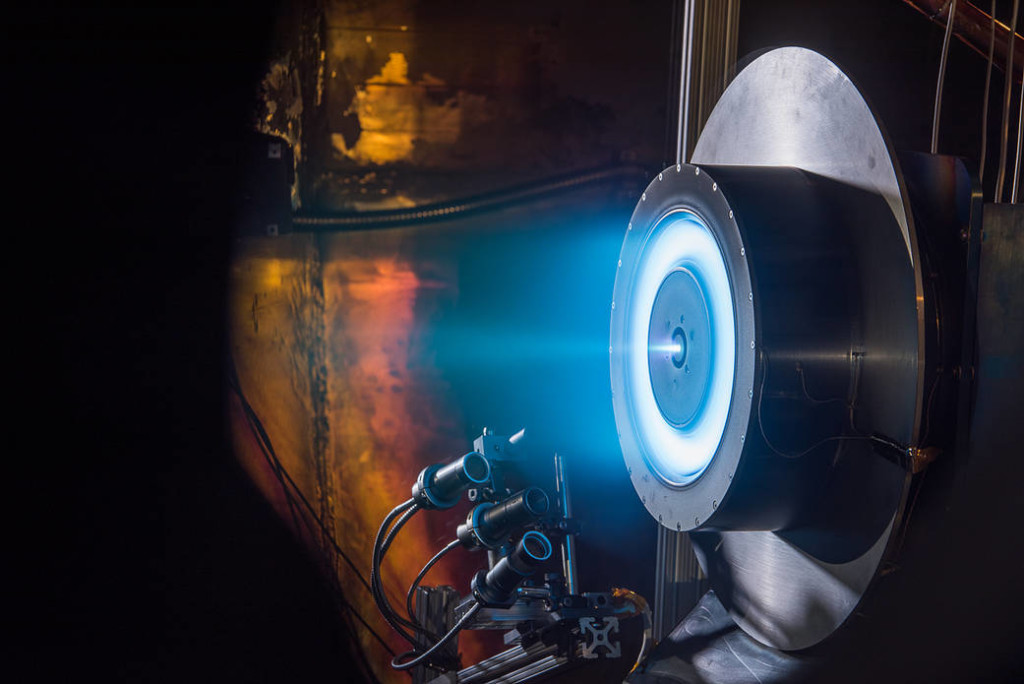Dr. Hara, an assistant professor in the Department of Aerospace Engineering at TAMU, works primarily on electric propulsion and plasma physics.
Electric propulsion (EP) has become one of the primary propulsion systems for space missions due to its high thruster efficiency and specific impulse in comparison to conventional chemical propulsion. EP utilizes electricity, typically obtained from solar power, to produce ionized gas, i.e. plasma, and gain thrust. In order to optimize and control the thruster with precision, understanding the complex dynamics of the plasma flow is therefore required.

13-kW Hall thruster developed at NASA
Plasma is an ionized gas that is abundant in our universe. Depending on the plasma parameters, e.g. temperature, density, and pressure, the characteristics of the plasma flow vary. Examples include fusion, astrophysical plasma, plasma discharge, lightning, aurora borealis, spacecraft reentry, semiconductor manufacturing, biomedical applications, and spacecraft propulsion. Our computational models including kinetic and fluid methods are used to study discharge plasmas in EP devices as well as fundamental plasma phenomena.
Dr. Hara’s research group, Plasma Dynamics Modeling Laboratory, works collaboratively with other institutions in academia, national laboratories, and industry.


